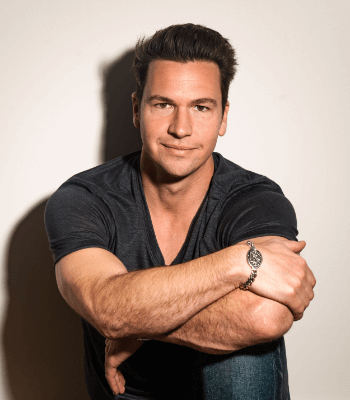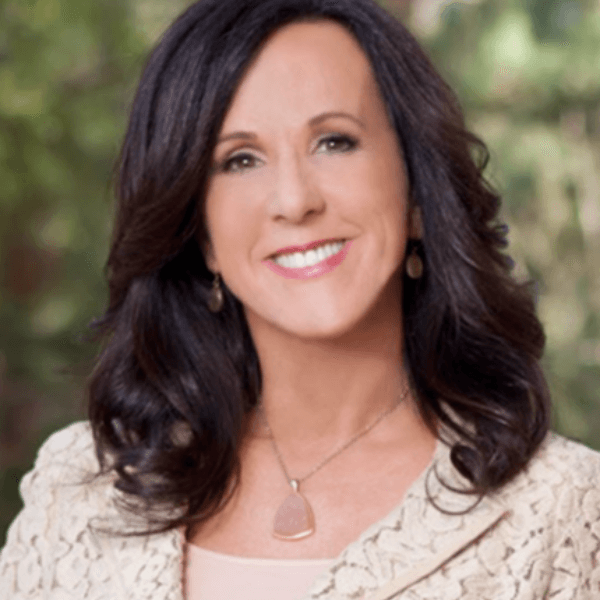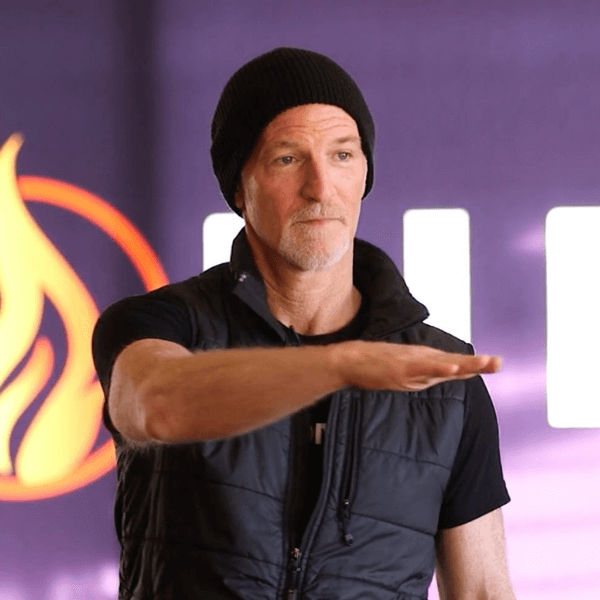How to Design a Personal Story That Sells

One of the most important factors in selling through sales videos is the personal story. Sharing your life story creates vulnerability and credibility in your sales videos. It allows you to connect with your audience in a deeper way. That’s why we’re going to break down the structure of designing a personal story.
Inspire Others and Sell Through Your Personal Story
The Personal Story Structure

First, I’m going to illustrate the personal story structure for you. Then, I’ll show you how to position your personal story narrative in different types of sales videos.
Just to give you some background, if you’re selling low-tier products, your sales video is going to be shorter. Therefore, your narrative should also be short. However, if you’re selling high-tier products, you can opt for a longer sales video and life story.
Regardless of length, the structure will stay the same. Done successfully, you’ll be able to utilize your story to position authority, credibility, vulnerability, and connection. Eventually, you can make the sale.
In terms of personal story structure, every great story has what we identify as the Call — this is a call into the story. After that, there’s the moment of disadvantage known as the Pit. In a story, there is also a Search, where the protagonist looks for answers and solutions. Finally, when it comes down to it, the Breakthrough moment happens.
Often, people who watch sales videos are more interested in the breakthrough. They immediately want to know the results. However, diving right into the results also has its disadvantages. If you skip ahead to the breakthrough, your audience won’t know the journey of what it took to get there. Consequently, they won’t believe that you identify with their struggles — which is the connection you ultimately want to achieve.
As you tell the entire arc of your journey, make sure your personal story demonstrates vulnerability and credibility. The Pit is where you create vulnerability. Then, you establish credibility through your Breakthrough. Always remember these two vital components as you design your life story.
My Personal Story
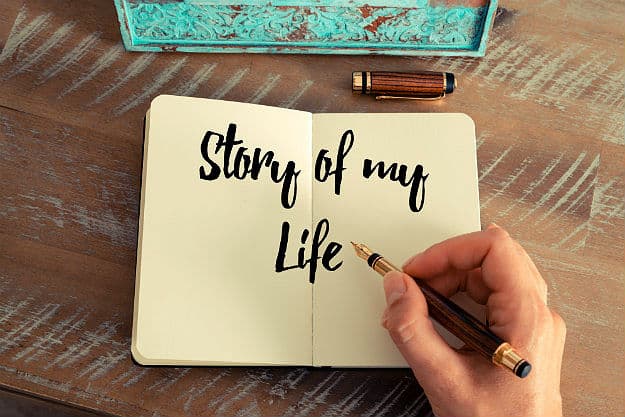
Now, I’m going to let you in on the personal story narrative I share in my sales videos. This is the framework I use when I sell high-tier products. It’s also an effective way to introduce myself to people who are new to my community.
My life story goes like this: “When I was six years old, my parents got divorced. The moment it happened, I felt unlovable. I began to think that I needed to achieve something to get my parents’ approval. Because that’s all I really ever wanted. So I became an achiever at a young age, even if I didn’t realize it then.
“When I was 21, I got into the insurance business with New York Life. One day, my boss told me, ‘I believe that you can make six figures within your first year in this business, Ted.’ I didn’t even have six cents at that time. Still, I believed him because I wanted his approval too.
“For me, it wasn’t about the money. 12 months later, I cracked six figures. The same night I did, I found myself on the kitchen floor. I overdosed from a bag of cocaine, two pills of ecstasy, and 15 drinks of alcohol. I literally felt like my soul was coming out of my body.
“Miraculously, I was revived the next day. That’s when I realized that money didn’t fulfill me. I then thought that if I became one of New York Life’s partners, my whole life will change. I looked forward to gaining status and earning respect.
“Six years later, I became one of the company’s top partners. In fact, I was number five out of 500 partners. But the day I got the news, I resigned. I realized that even achieving that did not fulfill me.
How I Started My Coaching Business
I got freedom in my life through helping others find it. pic.twitter.com/tuCFUyQsZE
— Ted McGrath (@ted_mcgrath) October 21, 2017
“I left New York Life to become an entrepreneur, but the two businesses I started completely failed. Now I was failing, and I was not even living my passion. I found myself on my couch with my head in my hands, wondering, ‘What am I going to do with my life?’
“That’s when I realized that I wanted to help people and coaching was a great way to do that. But before I dove right into it, I also had doubts. Do I even have life experiences and lessons to share with people? Am I valuable enough to help people?
“So I took out this blueprint that I’ve been using as a sales tool for a long time. I wrote down the life lessons that I gained. Through those, I discovered personal skills that I could use in coaching. For instance, I am able to teach sales. I am also a strategic thinker and a determined person.
“Eventually, I was able to present my coaching offer blueprint to my first potential client, and I got my first check for $3,000! I started getting more clients, which helped me build a six-figure business. I was also able to start my own seminar business.
“Today, I am fortunate. I was able to build a multi-million dollar company doing exactly what I love. Additionally, I am able to teach my flagship brand, Message To Millions, to people all over the world. I have the means to travel with my family and live a great life.”
1. The Call
The first part of the personal story I shared was the Call. My parents got divorced when I was six years old. This is the call into the story. This is when the first problem presents itself.
I was a regular kid who suddenly encountered a counter-intention. I wanted to be a kid and have fun, but then a counter-intention happened when my parents divorced. It made me feel unlovable.
I got called into the story because I was faced with a counter-intention. I say, “I don’t feel loved, but I want to be loved. How do I get it? I should go and become an achiever.” The call begins.
2. The Pit
Then, in my search for approval and love, I cracked six figures in my insurance business. However, the result of this was my overdose on drugs and alcohol. This is the Pit moment. It is the down-and-out moment where your life falls apart. It doesn’t necessarily mean a near-death experience like mine, but it does have to be a really low emotional moment.
The point of the Pit is to bring people down emotionally. After all, some of your audience and clients are in this emotional place. In a sales video, if you connect with people emotionally on this level, their reaction will be, “Wow, he knows what it’s like to feel my pain. He’s been there. He did it. I can do it too.”
This connection is established through the vulnerability you show. Vulnerability is power. This is one of the reasons why you should share your personal story in your sales video — especially if you’re selling a high-tier product.
3. The Search
Now, when you’re down in the pit, you can’t just all of a sudden say, “Hey, I feel for you. I connect with you. Buy my product.” Instead, there’s a Search for answers.
For instance, while I was in my Pit moment, I sought the love and approval I craved. Because of this, I became one of New York Life’s partners. Then I realized that it wasn’t the answer, so I started two businesses I wasn’t passionate about. Those didn’t work out either.
Eventually, I decided to become a coach to help other people. Though I had self-doubts in the beginning, I was able to overcome them. I went on to create a blueprint where I laid out my life story, the life lessons I learned, and how I knew I could help people.
4. The Breakthrough
Soon, I realized that I could thrive in this business. I presented my blueprint and got my first client for $3,000. That’s how my Breakthrough happened. My breakthrough moment came when I created my blueprint and got my first client ever.
By sharing my personal success story, I am able to connect deeper with my audience. It makes them want to become a part of my community. I’m telling you, our life story is powerful — so much so that I was even able to create a one-man show based on it. I play 12 characters on stage, and I get to take my audience through this whole journey. It’s amazing, and I love doing it.
The Personal Story Format for Short Sales Videos

Those are the only four parts you need to remember when designing your personal story. If you’re creating a long sales video, you can tell your personal story in two to three minutes. However, for short sales videos, you don’t have time to tell a three-minute story.
Remember, you can still share your personal story, but only bits and pieces of it. Remember that the Pit and the Breakthrough are essential. The trick is, instead of elaborating on each moment, simplify your story. Draw attention to the Pit moment. Then go into the Search. Afterwards, reveal your Breakthrough.
Your audience will still be able to relate to you even through these bits and pieces of your personal story.
The Personal Story Formula
A simple formula to create a life that inspires you every day: https://t.co/PvY0UjJSYf pic.twitter.com/3uzGm1vLLn
— Ted McGrath (@ted_mcgrath) October 22, 2017
If you know the personal story formula, you can utilize it in a really powerful way. Otherwise, you risk telling a narrative that is all over the place.
The reason why I can tell a story and be effective is that I know the four points (that is, the Call, the Pit, the Search, and the Breakthrough). People want to hear the result. Without it, you will not have credibility. If you only have one big pit moment and no breakthrough, you lose credibility.
You’ve got to have both vulnerability and credibility. After all, credibility without vulnerability makes you look like you’re just bragging. Given this impression, your audience and clients won’t believe that you understand their situation and won’t buy your products.
Integrating Your Personal Story into Your Sales Video
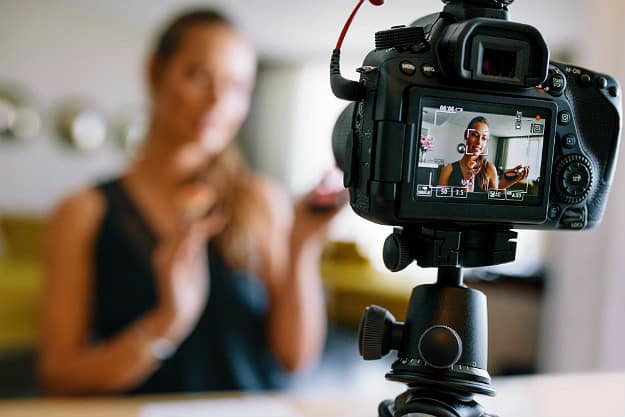
Now, in which part of your sales video should your personal story be integrated? The answer is right at the beginning. I have also previously discussed this in the sales video framework. You go into the intro, talk about the problem, and present the opportunity. After that, you drop your personal story.
By placing your personal story at the start, you add a humanizing effect to your sales video. After all, everything that you can help your audience overcome has already been demonstrated by your own story. That is how you build a connection with them.
Case Story

The next thing I want to share with you is the case story. Here, your client’s story and the results they achieved through your program are featured. The case story has a similar dynamic as the personal story.
If you have a longer sales video, you can tell a lengthy version. However, if you have a shorter sales video, you need to stick to your points while still including the elements we talked about earlier.
While your audience already knows the results you’ve achieved, they want to know who else did. The case story is your chance to highlight your results further. Avoid telling a bland case story. Your audience should be able to relate to the clients featured in your case stories.
My Client’s Case Story
Speaking my truth and sharing my story gave me the ultimate freedom. pic.twitter.com/MMoBqpwc13
— Ted McGrath (@ted_mcgrath) October 23, 2017
I’ll give you an example of a case story that hits all of these emotions. One of my clients, Tyler Watson, used to work in the network marketing business. He went around and knocked on doors. One day, after knocking on 17 doors, he came back to his car. He was so tired that he passed out and took a nap.
When he got home, he was at an all-time low. He didn’t know what to do anymore. Then he checked his computer and saw that he got an email from a guy named Ted McGrath. Tyler was invited to join the Message To Millions webinar.
He almost dismissed it, but something about my story resonated with him, so he gave in and registered for the webinar. Eventually, he bought the Message To Millions training.
Tyler told me, “I went boot camp on that program. For two straight days, I watched all the videos on how to create my blueprint. I watched all the videos on sales and just went through it. About a week later, I was on a plane, and I started to talk to people. I was beginning to create my own coaching program.
On that plane ride, I took out my blueprint and showed it to a lady. I told her what I was doing. To my amazement, she responded with, ‘I need that.’
My program wasn’t even fully-developed yet at that time. But I was determined, so I told the lady that I could help her.”
Tyler charged his first client $1,500. This was his breakthrough. After sharing his blueprint, he got his first client ever.
Now, Tyler has a multi-six-figure coaching business. His wife is managing it with him, and they present on stages together. His whole life has changed. He was even able to fulfill his wife’s dream of owning a grand piano. All this Tyler achieved just 11 months after joining my program.
Integrating Your Client’s Case Story into Your Sales Video

That was a powerful case story. Now, if I am doing a long sales video, I will include that whole case story and tell it in 90 seconds to two minutes.
However, in a shorter sales video, I don’t need an extensive case story. With this in mind, I will position a shortened version after I present my pricing offer. Once the person clicks on my offer, then they can hear the longer version of the case story.
If I want to demonstrate credibility before the price offer, here’s how I’ll share the abbreviated case story:
“One of my clients, Tyler Watson, used to knock on doors all day long. He couldn’t sell to save his life. He realized he wanted to be a coach, but he didn’t know how to create a program or how to sell.
So one day, he enrolled in my Message To Millions program. He learned how to create his first blueprint. One time, as he was traveling on a plane, he showed his blueprint to a woman. And you know what? She paid him $1,500 to become one of his first clients. It changed Tyler’s life.
So if you want to create your program and get people to buy it, click on the button and get enrolled.”
Notice that although I shortened Tyler’s story, I still covered the important points. You still have the Pit and the Breakthrough.
Utilizing Your Client’s Case Story

Where do you include case stories? I tell them before I make my price offer. I also tell them after the price offer.
If I’m doing a long sales video for a high-tier product, I put in four to five case stories. If it’s a mid-tier product, I will have two case stories. For a low-tier product, I only have one. The length of my sales video is always proportional to my product pricing.
Remember that the personal story comes at the beginning of a sales video, while case stories are presented towards the middle and the end.
Use your personal story (and your clients’ stories) to sell more. This strategy is a game-changer in terms of establishing connection and authority with your audience. Your personal success story will let others experience results in advance. Trust me — this will make your sales videos more effective. I hope this serves you.
Right now, I want you to map out your personal story’s Call, Pit, Search, and Breakthrough. Do the same thing for your client case story. In your next sales video, integrate these stories.
Up Next: Earn Multiple Streams of Income by Monetizing Your Message
ABOUT THE AUTHOR
